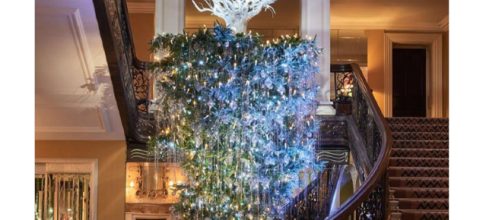The one thing that always makes the holidays joyful is family traditions. According to Pew Research, however, it seems that millennials are choosing to move away from the manner in which previous generations celebrated this festive time of year. Many in the younger generation are choosing to enjoy their Christmas Trees — Upside down. No one can identify when the trend began, but on November 22, a tree standing on its head was revealed when the London Hotel Del Coronado unveiled its holiday decor. The credit for this interesting sight goes to designer, Karl Lagerfeld.
The hotel staff described the tree as a silver stalactite. It can be purchased at Target for $1,000.
Millennials are doing the holiday their way
Most millennials are probably not going to invest $1,000 in an upside-down Christmas tree so it's likely that there are cheaper versions to be had. This change from the status quo, however, is catching on with their generation according to Pew Research. A good question would be; why the choice to flip a tree and change a tradition that has been around for centuries? For some folk, anything upside down raises eyebrows because, in a lot of the paranormal television shows, evil spirits turn crosses and religious relics downside up to make their presence known.
It seems Millennials are wanting to throw away many traditions and do things their own way, but Christmas trees that stand on their heads are probably only enjoying their 15 minutes of fame. Although a tree that was downside up appeared in season two of "Stranger Things" it is not believed that this popular television show has anything to do with this present fad.
The website, Hayneedle, is selling these top side down trees and has been visited more than 100,000 times, so there is interest.
Upside down trees were actually used in the middle ages
For those who believe a downside up Christmas tree is sacrilegious, history tells us that this type of tree was actually used in the middle ages and was supposed to represent the Holy Trinity.
Even so, with many Millennials turning their backs on traditional religion, it's not a stretch to imagine that a group is using this trend to protest the faith of their fathers.
Whatever the reason, upside down trees, are popular in 2017 and may still be in the future. They will more than likely, however, end up like the aluminum Christmas trees of the early 1970's. These were pretty trendy, but only that, and they only lasted for a few holiday seasons. One thing that will probably never go out of style is the use of live trees and trying to decorate one of those standing on its head might be close to impossible.


